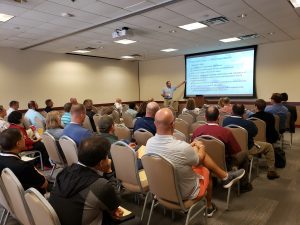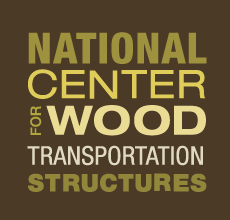InTrans / Feb 11, 2020
Research aims to prepare local agencies for CAV future

Estimates for the adoption of connected and autonomous vehicles (CAVs)—and the level of autonomy—vary from just a few years to decades.
“More is known than unknown, and the most likely path forward is that cars will have more and more driver-assist technologies like lane-keeping or back-up cameras, side cameras, and slowly getting more and more connected,” said InTrans Director Shauna Hallmark, who recently led a research project with co-principal investigators Theresa Litteral and David Veneziano on preparing local agencies for CAVs.
“We’re going to be transitioning for quite a bit,” said Hallmark.
The considerable timeline makes it difficult for local agencies to ready their roadways for these new technologies. However, there are plenty of modest modifications that local agencies can implement today that will help them prepare for the inevitable arrival of CAVs.
Much of what local agencies can do falls under maintenance activities and increased consistency across agencies, both of which will also assist drivers today.
“The more we can move to standard configurations, the less potential for confusion in these systems,” said Veneziano, who is also the LTAP Safety Circuit Rider. “Consistency is so important.”
Some specific actions agencies can take to prepare for CAVs include:
- Pavement markings: Place lane lines after resurfacing, maintain quality lane lines, and consider adopting 6-inch lane lines at some point in the future
- Signing: Maintain in good condition with good retroreflectivity and ensure the signs are not blocked by vegetation or other obstructions
- Maintenance: Implement timely maintenance especially when surface degradation, such as potholes, occurs
- Standardization: Review signing and marking practices to ensure consistency in terms of sign use, placement, and application
- Data capture: Develop inventories of features most likely to be impacted by CAVs, such as features relevant to speed limits or safety warning messaging
- Communication infrastructure: Consider future communication needs in highway plans and share those needs with vendors when upgrades are contemplated
Maintenance and consistency efforts are especially important when it comes to winter maintenance, as snow and ice could obscure roadway markings and signs, causing difficulties for both CAVs and for human drivers.
“Getting roads cleared off sooner will help the connected vehicles, the CAVs, but it will also help the human driver, and I think that’s the biggest takeaway. Everything that you do for CAVs is also really good for the human driver,” said Hallmark.
More details are available in the report here.
